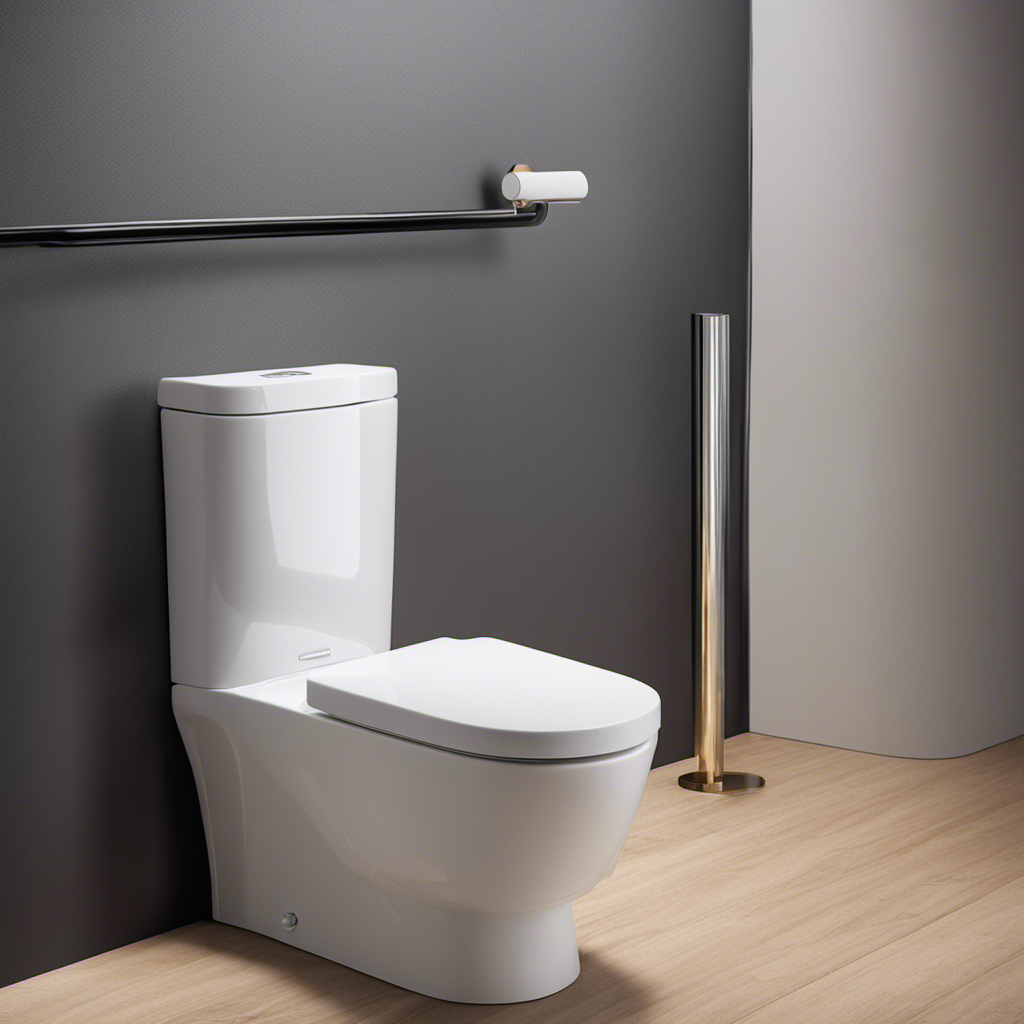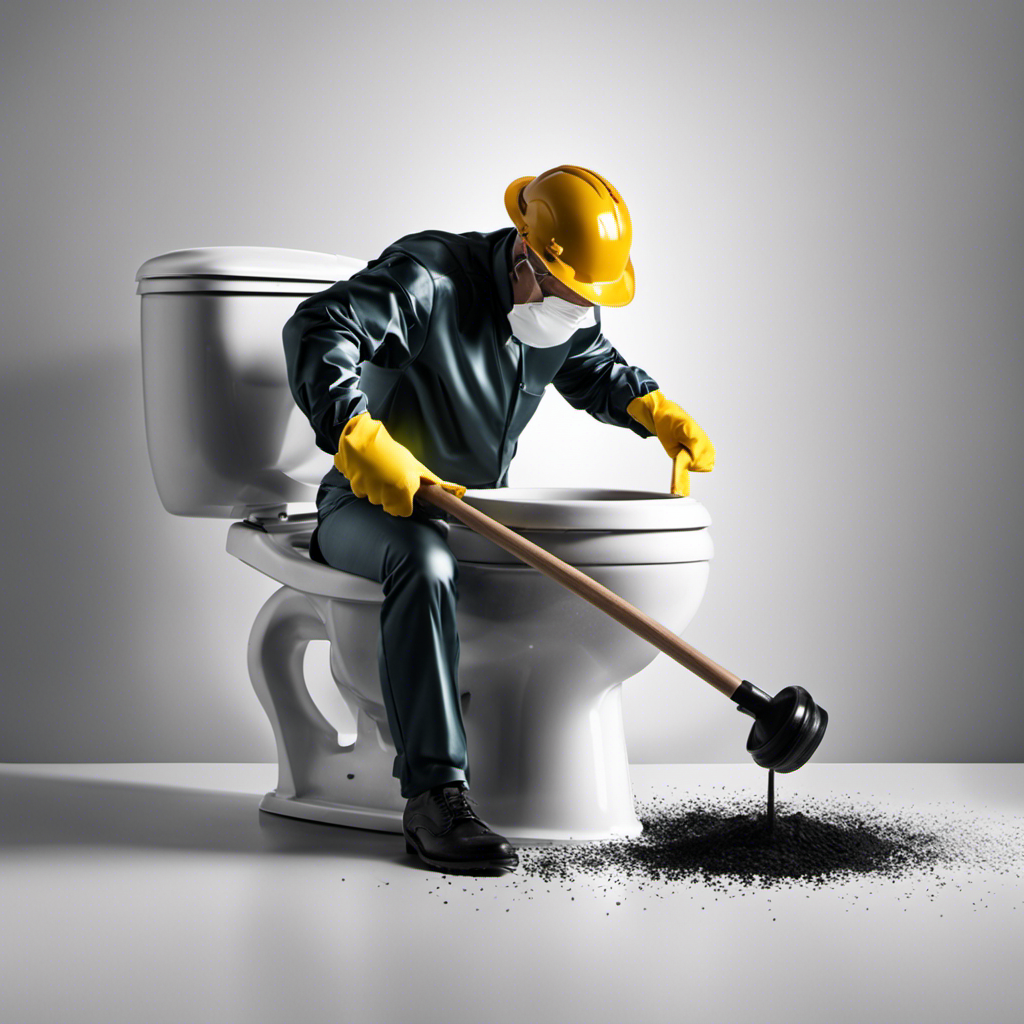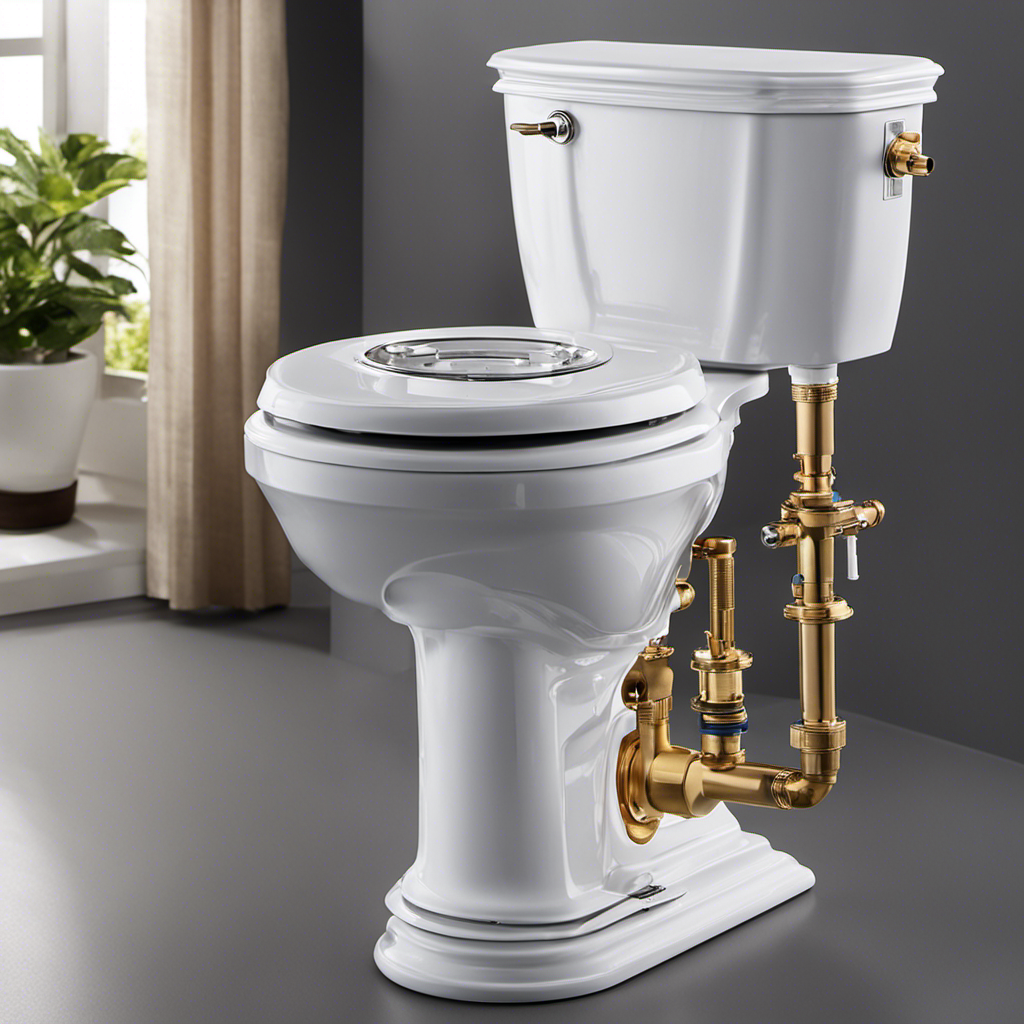When my toilet started constantly running and my water bill skyrocketed, I knew I had to take action. Fixing a toilet float may seem like a daunting task, but with a little know-how, it can be a straightforward and cost-effective solution.
In this article, I will guide you through the process of understanding, identifying, and adjusting common float problems. Whether you need to repair or replace the float, I’ll provide you with troubleshooting tips to ensure your toilet operates smoothly once again.
Let’s get started!
Key Takeaways
- The toilet float controls the water level in the tank and can cause issues with water levels if it malfunctions.
- Signs of a malfunctioning float include improper flushing and constantly running water, which should be promptly addressed to prevent further damage and water wastage.
- Float maintenance is crucial for proper toilet functioning, and there are alternative float mechanisms available to adjust the float height, such as the Adjustable Arm Float, Cup Float, and Ball Float.
- Repairing or replacing a malfunctioning float is important to prevent constant running water, low water levels, leaks, and water damage. Basic tools like an adjustable wrench and a screwdriver are needed for the repair or replacement process.
Understanding the Toilet Float
The toilet float controls the water level in the tank. It is an essential mechanism that ensures proper functioning of the toilet.
The float is typically a buoyant object, such as a ball or cylinder, attached to a lever or arm. As the water fills the tank, the float rises, and when it reaches a certain level, it signals the water inlet valve to shut off. This prevents the tank from overflowing.
However, float problems can occur, causing issues with water levels. Troubleshooting float problems involves checking for obstructions or damage to the float mechanism, adjusting the float height, or replacing the float altogether.
Regular maintenance and understanding of the toilet float mechanisms can help prevent future float problems and maintain a properly functioning toilet.
Identifying Common Float Problems
One common issue you might encounter is when the toilet float doesn’t stay in the correct position. This can lead to toilet leaks and other problems.
There are several causes of toilet leaks, but a malfunctioning float is often to blame. The float is responsible for regulating the water level in the tank. When it doesn’t function properly, it can result in an overflowing tank or a constantly running toilet.
There are a few signs to look out for that indicate a malfunctioning float. These include the toilet not flushing properly, water constantly running into the bowl, or a tank that fills too slowly or too quickly.
If you notice any of these signs, it’s important to address the issue promptly to avoid further damage and water wastage.
Adjusting the Float Height
To avoid toilet leaks and water wastage, it’s important to promptly address any signs of a malfunctioning float, such as improper flushing or constantly running water. Float maintenance is crucial in ensuring the proper functioning of your toilet.
Here are some alternative float mechanisms that can help you adjust the float height and prevent water wastage:
-
Adjustable Arm Float: This float mechanism allows you to easily adjust the float height by bending the arm up or down.
-
Cup Float: This float is designed to sit on top of the water and rise with the water level. It ensures accurate water level control.
-
Ball Float: This traditional float mechanism consists of a ball attached to an arm. It rises and falls with the water level, controlling the valve.
-
Diaphragm Float: This float uses a diaphragm to control water flow. It is more reliable and less prone to leaks.
By properly maintaining and adjusting your float mechanism, you can prevent water wastage and avoid costly repairs.
If your float is beyond repair, the next section will guide you on how to replace or repair it.
Repairing or Replacing the Float
If you notice any issues with your float mechanism, you should consider repairing or replacing it to ensure proper functioning of your toilet. A malfunctioning float can lead to problems such as constant running water, low water levels, or even leaks.
Repairing leaks is crucial to prevent water damage and wastage. To repair or replace the float, you will need some basic tools like an adjustable wrench and a screwdriver.
First, turn off the water supply to the toilet. Then, remove the float valve by unscrewing it from the fill valve. Examine the float for any cracks or damage. If it is damaged, it is best to replace it. Otherwise, you can try repairing it by using epoxy or a similar adhesive.
Once the float is repaired or replaced, reassemble the float valve and turn on the water supply. Test the toilet to ensure that the float is functioning properly and there are no more leaks.
Troubleshooting Persistent Float Issues
When troubleshooting persistent float issues, it’s important to check for any debris or blockages in the fill valve. This can prevent the float from rising and shutting off the water flow properly.
To fix the problem, follow these steps:
-
Check for water leakage: Inspect the valve and surrounding areas for any signs of water leakage. This could indicate a damaged or faulty valve that needs to be replaced.
-
Clean the float mechanism: Remove the float and clean it thoroughly to remove any dirt or mineral deposits that may be interfering with its movement.
-
Inspect the float arm: Ensure that the float arm is properly attached and not bent or damaged in any way.
-
Adjust the water level: Use the adjustment screw on the fill valve to change the water level in the tank, ensuring the float is at the correct height.
Frequently Asked Questions
How Does a Toilet Float Work?
A toilet float works by rising and falling with the water level in the tank. It controls the water flow into the tank and helps maintain the proper water level. Troubleshooting toilet float issues may involve adjusting the float height or checking for any blockages.
What Are Some Signs of a Faulty Toilet Float?
Some signs of a faulty toilet float are inconsistent water levels, constant running water, and difficulty flushing. Troubleshooting toilet float issues involves checking for leaks, adjusting the float arm, or replacing the float altogether.
Can I Adjust the Float Height Without Removing the Toilet Tank?
Yes, you can adjust the float height without removing the toilet tank. By troubleshooting float problems, you can determine the appropriate height adjustment necessary to ensure proper functioning of your toilet.
How Do I Know if the Float Needs to Be Repaired or Replaced?
When determining if the float needs repair or replacement, troubleshoot first. Look for issues like water level problems and float malfunctions. If repair attempts fail, consider replacing the float for optimal functioning.
Are There Any Other Potential Causes for Persistent Float Issues Besides a Faulty Float?
Other causes for persistent float issues can include a clogged fill valve, a defective flapper valve, or a water pressure problem. Troubleshooting steps may involve cleaning or replacing these components to resolve the issue.
Conclusion
In conclusion, fixing a toilet float is a relatively simple task that can save you from costly water bills and potential water damage. By understanding how the float works and identifying common problems, such as a sticking float or incorrect water level, you can easily adjust or repair the float to ensure proper functioning.
Remember, a well-functioning toilet float is like a superhero, effortlessly controlling water flow and preventing any bathroom catastrophes. So don’t hesitate to tackle this DIY project and become a toilet float expert in no time!










